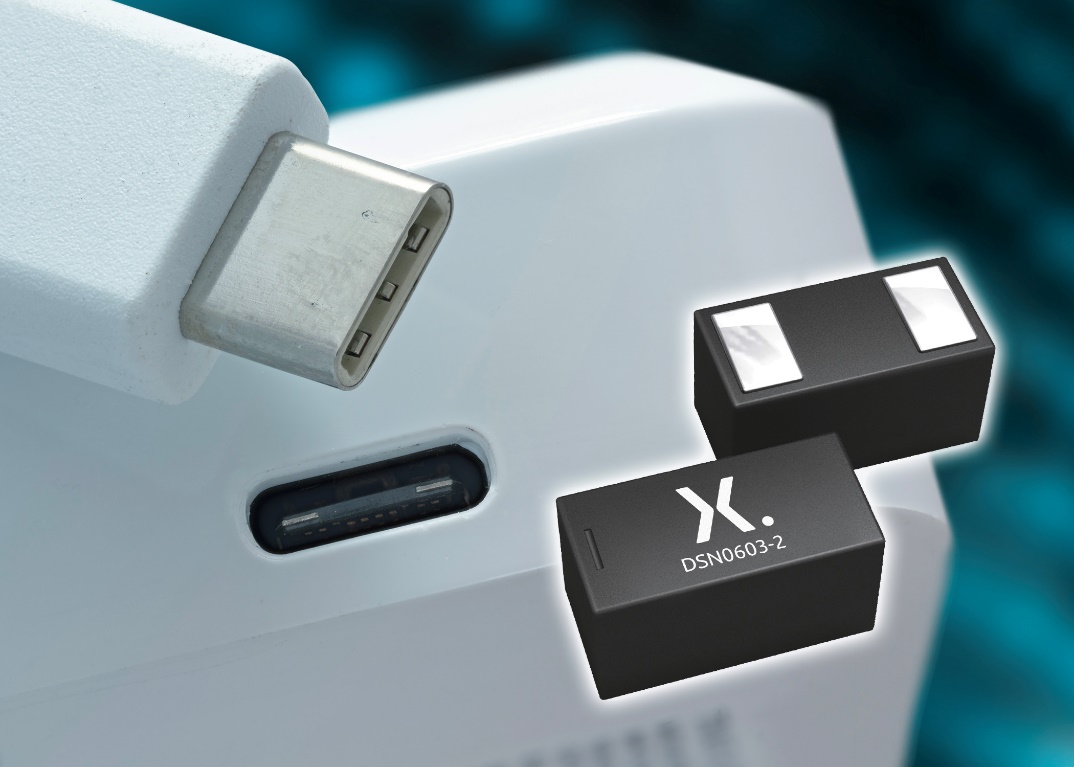By Warren Miller, contributing writer
As USB Type-C becomes the new standard for charging and data transmission, manufacturers will have to accommodate the faster speeds and improved power delivery that the interface provides. Enter Nexperia , the former standard products division for NXP, a manufacturer of discretes, logic, and MOSFET devices. The company recently updated its TrEOS ESD protection diode series to function in conjunction with USB Type-C interfaces, providing what it claims are the highest surge robustness and the lowest trigger voltage on the market.
The TreEOS features two series of devices: a group designed to be positioned between the connector and the capacitor and another for placement between the capacitor and the system chip. The TrEOS diodes are packaged without bond wires, resulting in lower inductance and high utility for mobile and computing applications.
According to Nexperia, incorporating active silicon-controlled rectification technology allows the TrEOS ESD series to provide uncommonly low capacitance (down to 0.1 pF) and low clamping (dynamic resistance down to 0.1 Ω) while maintaining high robustness against surge and ESD pulses (up to 20 A 8/20 µs for very fast datalines).

Photo courtesy of Nexperia.
TrEOS devices available for applications in which protection is required before the capacitor boast current ratings of 9.5 A, 15 A, and 20 A in 8/20 IEC61000-4-5 conditions. TrEOS devices for use after the capacitor claim the lowest trigger voltages (V t1), down to 4.3 V. The devices also feature a very fast turn-on time at about 0.5 ns, and devices can withstand up to 30-kV contact discharge, exceeding IEC 61000-4-2, level 4, said the company. These features also make them suited for micro-USB and USB Type-A interfaces.
USB-C interfaces provide significant functionality and open new application areas. With data speeds of up to 20 Gbits/s, even the most data-hungry displays, storage devices, and communications interfaces won’t miss a meal. One new and interesting application area that is showing up thanks to the USB-C connector is intelligent peripheral devices. These devices can do very high-speed data capture and data processing without loading down a connected device. The fast communications speed and robust power provided by the USB-C interface enables a new class of performance for instrumentation, signal processing, and intelligent surveillance as well as a host of other similar applications.
USB-C is clearly an interface with a wide and growing applications base. New devices like the Nexperia TrEOS are welcome additions to the connected device designer’s toolbox. The company provides a parametric USB protection search guide to help designers select the best device for their systems.
Advertisement
Learn more about Electronic Products Magazine





